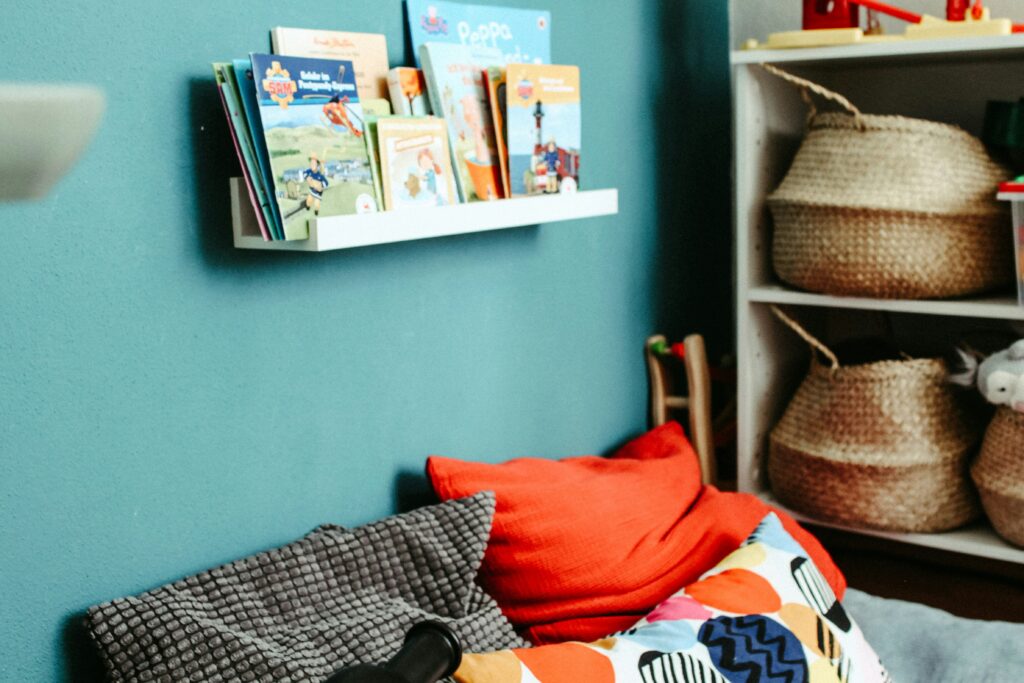As a SEND parent, I know how important it is to create spaces where our children feel safe, calm and understood. Life can be noisy, unpredictable and so overwhelming that sometimes home is the only place where we can all reset. Over the years, I’ve learnt, through trial, error and a fair few meltdowns that sensory-friendly spaces don’t need to be expensive or complicated. They just need to be thoughtful and tuned in to our children’s needs.
Start Small and Personal
When I first began adapting our home, I thought I needed to overhaul everything. The truth is, it’s often the little touches that make the biggest difference. Plus a total change can have the opposite effect sending your child into overwhelm. For one of my children, that meant a corner of the living room with soft cushions, a weighted blanket and their favourite books within reach. For another, it was more about reducing clutter and keeping their room simple, with calming colours and predictable routines.
Every child is different and that’s the first thing to remember, there is no one-size-fits-all. Notice what your child naturally gravitates towards and use that as your guide.

Think About the Senses
Sensory friendly spaces are about more than quiet. They take into account all the senses:
Sight – Soft, natural lighting works wonders. Lamps instead of harsh overhead lights, blackout blinds for better sleep, or fairy lights or a sensory projector for a gentle glow.
Sound – Some children crave silence, others feel comforted by background noise. White-noise machines, soft music, or noise-cancelling headphones can all help.
Be mindful of wires or hazards ensuring you take necessary precautions!
Touch – Offer a mix of textures: soft blankets, fidget toys, or even a basket of natural items like pinecones or smooth stones. (This can also be a really good scavenger hunt activity in nature and open up a world of learning)
Smell – Strong scents can be overwhelming. Stick to gentle smells, fresh air from an open window often works better than candles or sprays.
Movement – Space to bounce, rock, or swing can be invaluable. If you don’t have much room, even a mini-trampoline or a sturdy chair for rocking can make a big difference.
Keep It Flexible
One lesson I’ve learnt is that what works one week may not work the next. Children grow, their needs shift, and so must our spaces. Be prepared to adapt and change things around.
I keep a small box of sensory tools (stress balls, fidget toys, resistance bands, tennis balls, weighted lap pads, sensory boxes with play-dough for sensory input) that we can swap in and out depending on the day.
Bring the Outdoors In
Living on a farm, nature is our greatest sensory space. Fresh air, animals, and wide-open fields help my children regulate more than anything indoors ever could. But even if you don’t have that on your doorstep, you can bring a touch of nature inside, plants, natural light, or a small indoor tent for that feeling of retreat, creating a outdoor indoor environment can really help with the feeling of space and connection to nature to promote regulation.
Above All, Follow Your Child
Creating sensory-friendly spaces is not about achieving perfection. It’s about listening. Our children tell us, in their own ways, what feels safe and what feels too much. By observing, adapting and trusting our instincts, we can create homes that truly support them.
It isn’t about fancy equipment, it’s about love, patience and a willingness to meet our children where they are. That’s what makes a house a sanctuary.
Some of our other sensory equipment that we use are:
- Sensory floor mats and hand size mats for taking on the go, lava mats, sequin boards, spinning chair and hammock.
- Building blocks giant ones to help with weight helping regulation,
Weighted blanket and a beanbag this is good for settling down and also supporting hyper motability (we love crating a wrapped up hotdog for deeper compression support) - Hand size beanbags for throwing and catching a great workout and can incorporate learning and hand eye coordination.
- Projector light.
Weighted bear with lavender and teepee for creating a quiet den. - Musical instruments get way to either incorporate soft sound or increase noise with expression.
- Play dough is another great sensory tool, with palm pushing rolling and squishing,
- Fidget toys including a lovely cloud shaped mat with fidget worms to follow the rainbow shape.
- Sensory nature box full of the outdoors, pipe cleaners these tactile pipes of fun are amazing for creating shapes or use for learning well creating sensory input.
Here are 20 other engaging activities that can be used
https://www.thefarmingmother.co.uk/20-tips-for-engaging-activities
This post was written by Keely Reading, founder of The Farming Mother.
